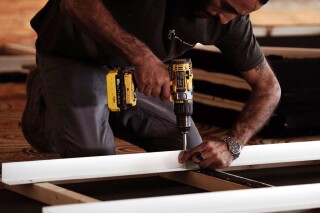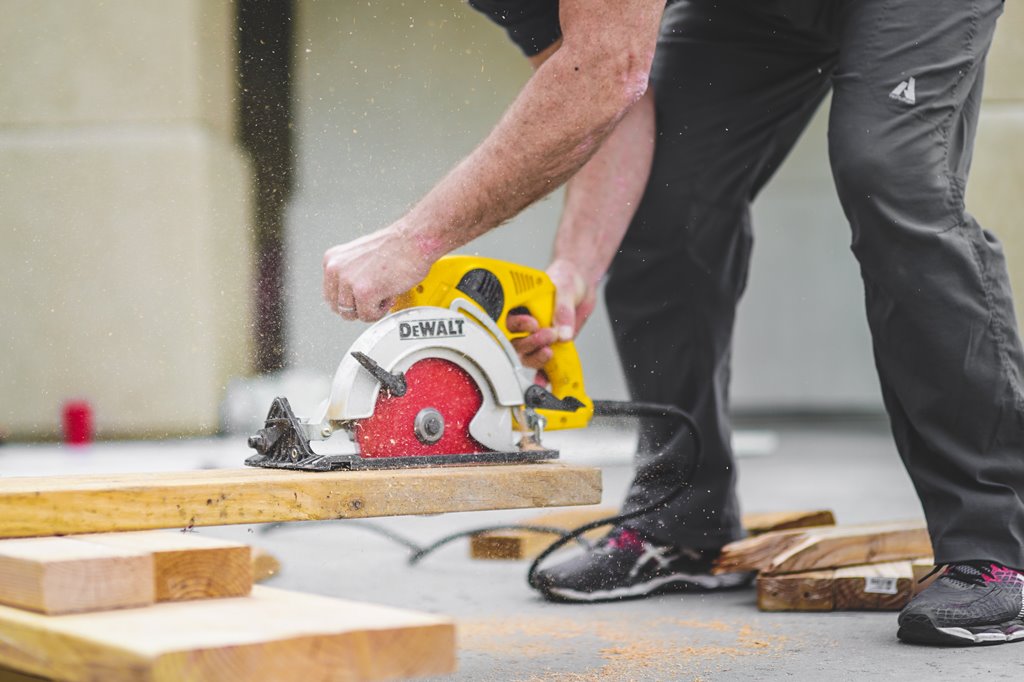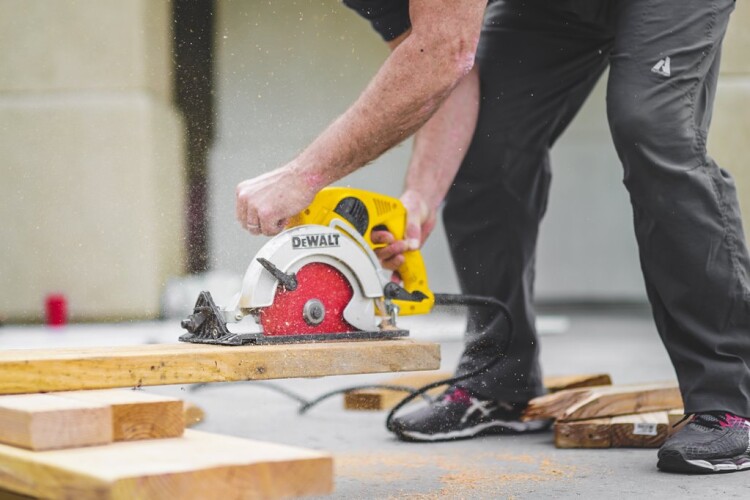Maybe to no shock, the facility instruments market stays buoyant. International forecasts present that by 2027 greater than 600 million instruments will likely be bought throughout the industrial and residential market – greater than double the quantity recorded in 2015. Statista information additionally exhibits the power-driven hand instruments market will generate greater than US $56bn (£45bn) by 2025.
For greater than 60 years, patrons have had a comparatively easy selection on which kind of energy device they wish to buy, particularly mains or cordless. However for a way for much longer will that be the case?
In recent times, the development business has witnessed a outstanding shift in direction of cordless energy instruments. The expertise continues to get higher with every passing 12 months as professionals and DIY lovers alike embrace the advantages of portability, effectivity and enhanced security.
Undoubtedly, mains-powered instruments nonetheless have their place on the job website, notably for heavy-duty jobs, however the momentum can be undeniably shifting in direction of cordless options, notably for transportable instruments used on website.
As cordless expertise continues to advance, the query arises: When will mains energy instruments develop into a factor of the previous?
The numbers behind the cordless revolution
The rising reputation of cordless energy instruments is obvious from market statistics. Sticking with business worth, the cordless instruments market is on monitor to hit just below $47bn – greater than doubling in worth in simply 9 years. Once we drill down (sorry) into the explanations behind that, the market shift in direction of cordless is evident.
A research by Technavio confirmed that cordless instruments accounted for 81.1% of gross sales final 12 months within the UK skilled energy instruments market, with corded instruments making up simply 18.9%. AS not too long ago as 2018 that cut up was 50-50, in accordance with the European Energy Device Affiliation. One of many fastest-growing energy device manufacturers noticed an awesome 99% of its instruments bought from its battery-powered platforms.
Typically talking, cordless instruments have shaken off their fame for not being nearly as good as their mains equal. Acceptance has grown throughout all sectors. Coupled with that’s the higher want for fastening instruments and the booming building business throughout growing nations.
As demand for energy instruments will increase, and with the usage of lithium-ion batteries changing into extra widespread, the cordless instruments phase is projected to dominate the market’s progress from 2022 to 2027.
Lithium-ion batteries: pioneering the cordless revolution
Within the early days, cordless energy instruments struggled to match the facility and efficiency of their plug-in counterparts. Nonetheless, the introduction of lithium-ion battery expertise revolutionised the business.

The primary lithium-ion battery-operated energy device was launched to the market 20 years in the past, within the autumn of 2003. It was the IXO cordless screwdriver by Bosch and it was powered by a single 3.6V lithium-ion cell.
Developed by supplies scientist John Goodenough in 1980, lithium-ion batteries supplied a outstanding charge-to-weight ratio, making them splendid for transportable battery-powered instruments.
The adoption of this expertise by main manufacturers, like Milwaukee and Makita, propelled cordless energy instruments into the mainstream however adoption confronted resistance from battery anxiousness and plenty of patrons most popular to stay with what they knew.
However battery expertise continues to develop. Decreasing the price of cordless energy instruments, bettering their versatility, and eroding any residual battery anxiousness will solely proceed to drive up the market share of cordless instruments.
The opposite issue to contemplate right here is the value. Whereas costs of supplies and gear go up, the value of lithium batteries comes down. Based on information collected by Bloomberg, the volume-weighted common worth of a typical lithium-ion battery has plunged by greater than $1,000 since 2010 and continues to lower incrementally annually.
The electrical car market is the most important contributing issue to that. So too is its position within the energy instruments market.
Every part else goes good and so are cordless energy instruments

Now we have smartphones, good properties, and each equipment you may consider that’s adopting good expertise. The identical is going on with energy instruments.
Manufacturers like Milwaukee are leaders on this area. They launched their device connectivity platform, One-Key, enabling customers to manage and monitor their gear remotely by means of smartphone apps. By its personal description, the IoT-connected good instruments are backed by the business’s largest Bluetooth monitoring group to assist its customers join websites, individuals, and gear – and crucially assist find stolen gear.
Briefly, the facility instruments market is branching out past simply the device. These good instruments additionally provide options like safety lockouts, stock administration, and gear customisation, all constructed to optimise efficiency and improve security on job websites.
Whereas Milwaukee leads the best way, others are following. Manufacturers, similar to Bosch and Festool, are additionally growing their very own good device expertise, creating a spread of linked cordless options that, within the phrases of Hilti’s GB vice-president Thibaud Lefebvre, will cut back inefficiencies at a time the business is battling tight schedules and labour shortages, defending margins, and managing danger.
Improved security
One of many largest benefits of cordless is the removing of the massive electrical present that flows by means of the mains different. Again in 2016, the USA’s Bureau of Labor Statistics confirmed that 53% of all deadly electrical accidents had been within the building business. Not all of that may be attributed to energy instruments however they do issue into this dialog.
In addition to the removing of the electrical present, the absence of trailing cables, and the elimination of cumbersome 110V transformers, batteries are enjoying a serious position in lowering office hazards and bettering job website mobility.
Some building websites have even banned corded energy instruments altogether on account of security considerations. Moreover, cordless instruments don’t require pre-use transportable equipment testing (PAT), streamlining gear readiness.
There are quite a lot of positives, subsequently, so what’s holding cordless instruments again from an entire market takeover?
There is just one reply to this query: the battery.
There isn’t any getting over the truth that shifting to cordless means you’re continuously needing to maintain on high of your battery cost. The usual lithium-ion battery will last as long as eight hours on the job, relying on how highly effective the battery is and what device is getting used.
Each product has a lifespan. The common cordless energy device product – powered by a lithium-ion battery – will final not more than three years if used steadily. Producers declare that customers can anticipate to get roughly 1,000 cost cycles out of a battery earlier than it packs up. Analysis in 2009 confirmed that lithium-ion battery-powered instruments had an estimated 500 cost cycles.
In the end, it’s my opinion that lifespan is likely one of the solely elements why corded instruments stay in the marketplace as we speak. High quality corded instruments nonetheless outlast the battery different by at the very least a few years. Most individuals as we speak will know somebody who has nonetheless received a corded drill that they bought within the Eighties and it’s nonetheless going robust.
Whereas progress has been made on this entrance, as soon as cordless instruments overcome the difficulty of longevity, we’re going to be wanting on the fast finish of the corded instruments.
How lengthy will or not it’s earlier than mains energy instruments are out of date?
With a projected compound annual progress charge (CAGR) of 5.02% from 2022 to 2027, the cordless energy instruments market is about to proceed its growth, pushed by the rising demand for energy instruments, DIY constructing merchandise, and developments in lithium-ion battery expertise.
Given this fast progress, it’s only a matter of time earlier than cordless energy instruments develop into the brand new commonplace for professionals and lovers alike.
The information exhibits now we have seen an enormous bounce in simply 5 years, from a 50:50 international cut up to 81:19 in favour of cordless. It’s conceivable, because the expertise continues to develop and manufacturing on corded instruments winds down, the ratios will likely be 90-10 by 2027.
Give it one other 10 years and I’m undecided there will likely be any mains energy instruments in any respect. The sand timer is ticking. The development business is undeniably experiencing a monumental shift in direction of cordless energy instruments. With a plethora of benefits, together with portability, enhanced battery runtimes, good options, and improved security, cordless instruments have develop into the popular selection for many.
The day when mains energy instruments disappear from cabinets and develop into a relic of what the development business as soon as was is only a matter of years away.
Obtained a narrative? Electronic mail information@theconstructionindex.co.uk


